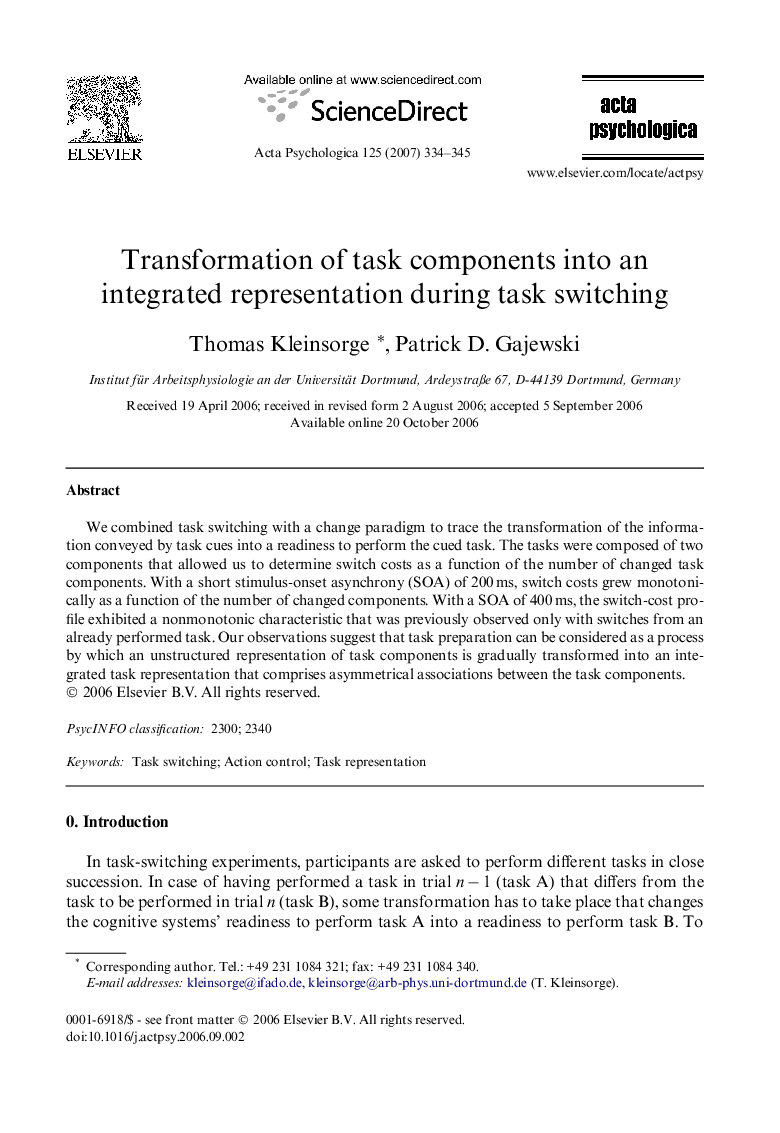| Article ID | Journal | Published Year | Pages | File Type |
|---|---|---|---|---|
| 920679 | Acta Psychologica | 2007 | 12 Pages |
We combined task switching with a change paradigm to trace the transformation of the information conveyed by task cues into a readiness to perform the cued task. The tasks were composed of two components that allowed us to determine switch costs as a function of the number of changed task components. With a short stimulus-onset asynchrony (SOA) of 200 ms, switch costs grew monotonically as a function of the number of changed components. With a SOA of 400 ms, the switch-cost profile exhibited a nonmonotonic characteristic that was previously observed only with switches from an already performed task. Our observations suggest that task preparation can be considered as a process by which an unstructured representation of task components is gradually transformed into an integrated task representation that comprises asymmetrical associations between the task components.
